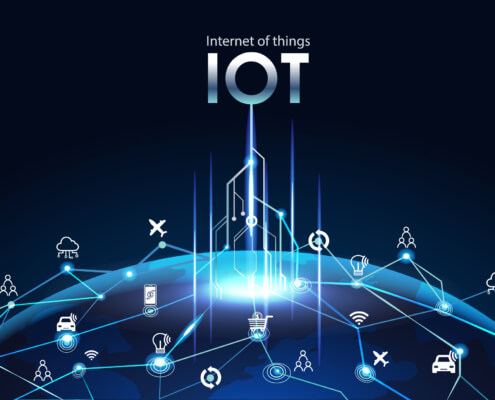IoT systems present unique security challenges due to their large number of interconnected devices, diverse communication protocols, and varying levels of device capabilities. Here are some common security challenges in IoT systems:
- Device Vulnerabilities: IoT devices often have limited computational resources, making it challenging to implement robust security measures. Many devices may lack security features like secure boot, firmware update mechanisms, or tamper-proofing. This can make them vulnerable to attacks such as unauthorized access, data breaches, or device compromise.
- Inadequate Authentication and Authorization: Weak or inadequate authentication and authorization mechanisms can lead to unauthorized access to IoT devices or networks. Default or easily guessable credentials, lack of strong authentication methods, and improper access control policies can expose IoT systems to malicious actors.
- Network Security: IoT networks can be susceptible to various network-based attacks, including man-in-the-middle attacks, eavesdropping, or network spoofing. Inadequate encryption, weak protocols, and lack of network segmentation can compromise the confidentiality and integrity of data transmitted between devices and the cloud.
- Data Privacy: IoT systems generate vast amounts of data, often containing sensitive or personal information. Inadequate data protection measures, including encryption, data anonymization, or secure data storage, can result in privacy breaches or unauthorized use of personal data.
- Supply Chain Risks: The complexity of the IoT ecosystem involves multiple stakeholders, including device manufacturers, software developers, and service providers. Any compromise or security vulnerability at any stage of the supply chain can have significant consequences for the security of the entire system.
- Lack of Patching and Updates: IoT devices may not receive regular security updates or patches from manufacturers, leaving them vulnerable to known vulnerabilities. Additionally, the sheer number of devices in an IoT ecosystem can make it challenging to manage and update them all, leaving potential security gaps.
- Lack of Standardization: The IoT landscape lacks uniform security standards and protocols, leading to variations in the security practices implemented by different manufacturers and service providers. This lack of standardization makes it challenging to ensure uniform security measures across different IoT devices and systems.
- Physical Security: Physical access to IoT devices can pose security risks. Unauthorized physical access to devices can result in tampering, data extraction, or device compromise. Physical security measures such as secure device placement, tamper-evident packaging, or anti-tampering mechanisms are essential to mitigate these risks.
- Supply Chain Security: The complex supply chain involved in manufacturing IoT devices can introduce security risks. Counterfeit devices, compromised components, or insecure firmware can be introduced at various stages of the supply chain, leading to vulnerabilities in IoT systems.
- Lack of Standards and Interoperability: The absence of widely adopted security standards and interoperability protocols in IoT systems can result in inconsistent security implementations. This can make it challenging to establish secure communication, data exchange, and device management across different IoT devices and platforms.
- Overarching System Complexity: IoT systems often involve various interconnected devices, platforms, and applications. This complexity increases the attack surface and the potential for vulnerabilities. Identifying and securing all components of an IoT system can be a daunting task, especially when updates and patches need to be deployed across multiple devices and platforms.
ADDRESSING THESE SECURITY CHALLENGES REQUIRES A HOLISTIC APPROACH THAT INCLUDES
- Implementing strong device security measures, including secure boot, firmware updates, and hardware-based security features.
- Employing robust authentication and authorization mechanisms, such as two-factor authentication and secure access control policies.
- Ensuring end-to-end encryption and secure communication protocols for data transmission.
- Regularly updating and patching devices to address known vulnerabilities.
- Implementing data protection measures, including encryption, access controls, and secure data storage.
- Conducting security audits and assessments to identify vulnerabilities and implement appropriate countermeasures.
- Establishing secure device management practices, including secure provisioning, monitoring, and remote management capabilities.
- Promoting industry-wide security standards and best practices to improve the overall security posture of IoT systems.
It’s crucial to prioritize security throughout the entire lifecycle of an IoT system, from device design and manufacturing to deployment, operation, and decommissioning. Regular security assessments and proactive monitoring are essential to identify and address emerging threats in the dynamic landscape of IoT security.
SHARE
